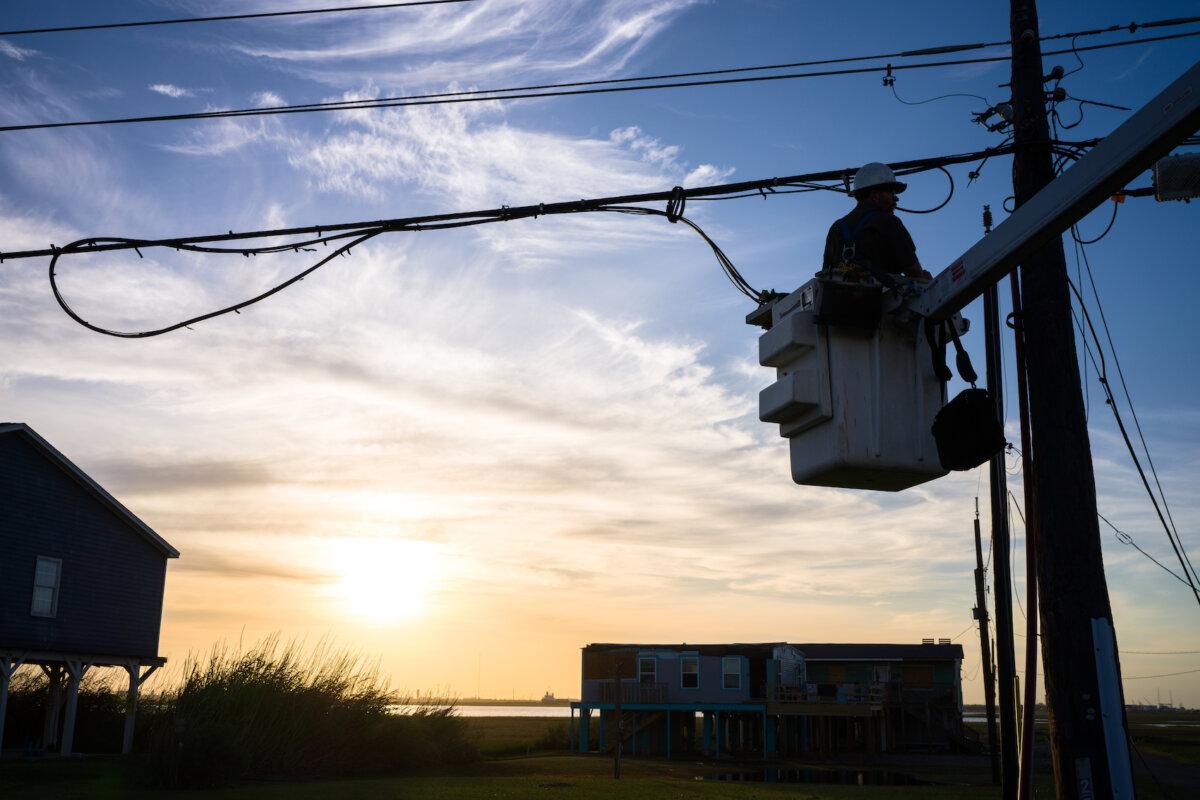Utilities from the Gulf of Mexico to New England bracing for a stormy summer.
Hurricane Beryl was on radars for more than 11 days, and its likely southeast Texas landfall was projected for at least five days before it crashed ashore July 8 in Matagorda Bay near Indianola, a ghost town abandoned nearly 140 years ago after being twice-destroyed by hurricanes.
The storm was not a surprise.
Yet, in Category 1 Beryl’s wake, at least eight people in Texas and Louisiana are dead, and more than 2.3 million homes and businesses in the Houston area were without power early July 9, down from more than 2.7 million the day before, according to PowerOutage.us.
“Based on current progress with its damage assessment and initial restoration, CenterPoint now expects to have 1 million impacted customers restored by the end of the day on Wednesday, July 10,” it said.
That leaves at least 1 million people in the Houston area alone without power for an extended period in a 90-to-100 degree steam bath under a National Weather Service heat advisory at least through to July 10.
CenterPoint said it would supply mobile generation units to provide temporary power to cooling centers, health care facilities, senior centers, police, and fire stations until electricity in storm-savaged areas is restored.
Intensifying Projections and Planning
Hurricanes are a familiar menace on the Gulf coast, although rarely has a storm of such fury, storm surge, and flooding arrived in July during the June 1-Nov. 1 ‘Mean Season.’
According to the National Oceanic and Atmospheric Administration (NOAA), the 2024 hurricane season has an 85 percent chance of being “above normal,” with 17 to 25 named storms and eight to 13 hurricanes, including four to seven “major” hurricanes. That’s a 30-percent increase in storm activity than 2023’s NOAA forecast.
The Houston area was among those determined to be most susceptible to prolonged storm-induced power outages like the one it will endure in Beryl’s wake.
“The average person in the metropolitan areas of Boston, Houston, and New Orleans could see expected outage events increase more than 70 percent per decade,” the analysis states, projecting Washington, D.C., would see its odds of sustained power outages from hurricanes in the coming decades increase by 21 percent, Philadelphia by 49 percent, New York City by 47 percent, and Boston by 76 percent.
Not surprisingly, Florida is particularly vulnerable, according to the study, with Tampa at 89 percent higher risk and Miami at 119 percent higher risk.
That vulnerability comes as no surprise, although planning for the “unpredictability” of hurricanes is getting more difficult, representatives from the state’s four private utility companies said during a May 22 presentation before the Florida Public Service Commission (PSC).
Florida Power & Light (FPL) President and CEO Armando Pimentel told the PSC that greater “unpredictability” during hurricane season has fostered a “conservative” worst-case scenario in planning when investing in infrastructure hardening and in response training.
The storms are getting bigger and coming more frequently, he said. “For whatever reason … there’s clearly an intensification going on,” he said. “And so now we have to prepare for storms a little sooner than what we had, and it’s going to be a little bit more costly than what we had.”
Tampa Electric Co. President and CEO Archie Collins spoke of the challenges of preparing for hurricanes.
“It is becoming an increasingly difficult game to figure out how to find that balance between being well-prepared and not overspending on planning for an impending hurricane,” Mr. Collins said.
Among the issues in responding to hurricane-induced outrages is that utilities in nearby states are hesitant to send mutual aid crews to Florida because another storm could strike while they are tending to a disaster elsewhere.
Duke Energy Florida President Melissa Seixas called assembling an emergency response mutual aid response effort is like “literally staging an army” with the host utility needing to find housing, food, and services for the arriving linemen and technicians.
Duke, which operates electric utilities in South Carolina, North Carolina, Kentucky, Ohio, and Indiana, can draw on its own workforce to supplement those in Florida in an emergency—and vice-versa.
Bracing For Storms To Come
Duke, based in Charlotte, North Carolina, is among mutual aid utilities sending workers to Texas in Beryl’s wake.
“Approximately 130 Duke Energy Florida lineworkers and personnel and about 100 contractors from the Carolinas deployed to Texas to help restore power with our mutual assistance partners this morning,” Duke Corporate Communications Manager Caroline Fountain told The Epoch Times in a July 9 email.
It’s “a good question” how long they’ll stay, she said.

In 2023, Duke stated, “self-healing technology helped to avoid more than 1.5 million customer outages, saving more than 3.6 million hours of total lost outage time across the company’s six-state service area.”
The company in June said it recently completed a multi-year modernization of seven new grid control centers.
FPL, a subsidiary of NextEra Energy with 12 million customers in Florida, did not respond to phone calls from The Epoch Times on July 9, but it touts years of investments in “a stronger, smarter, and more storm-resilient energy grid that benefits customers by improving the speed of restoration and reducing outage times following severe weather.
It has invested in “a smart grid,” buried power lines, and replaced older transmission structures with steel or concrete as part of a multi-year infrastructure strategy to strengthen the electric grid.
In May, FPL mobilized more than 3,500 employees in a drill simulating a Category 4 hurricane hitting Miami, deploying a mobile command center “equipped to enter the hardest-hit areas and maintain communication with field workers” and showcasing a statewide “smart grid technology” that can be controlled remotely to reroute power to essential areas following a storm.













